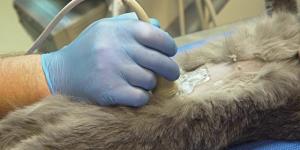In Vitro Fertilization (IVF) and Genetic Resource Conservation: Saving Endangered Cattle Breeds


The growing homogenization of modern livestock, focused on a few high-performance breeds, threatens the rich genetic diversity of traditional cattle breeds. These breeds, adapted to specific conditions and possessing unique characteristics, face the risk of extinction. In Vitro Fertilization (IVF) emerges as a crucial tool for the conservation of these valuable genetic resources.
The Role of IVF in Conservation
IVF allows the collection and preservation of eggs and sperm from animals of endangered breeds, creating embryos that can be frozen and stored for long periods. These embryos represent a genetic backup, ensuring the survival of the breed even in the event of a drastic population decline.
“IVF offers a unique opportunity to preserve the genetic diversity of traditional cattle breeds, which are true treasures of our history and culture,” says Carlos Augusto Delmindo Filho, a specialist in bovine reproduction and OPU Specialist at ABS Global Inc. “By freezing embryos, we are creating insurance for the future, ensuring that these breeds are not lost forever.”
In addition to preserving genetic diversity, IVF allows the reproduction of animals of high genetic value, even if they are geographically distant. Embryos can be transported and implanted in recipients, expanding the reach of the breed and increasing its population.
“With the use of advanced techniques of ovarian synchronization and follicular aspiration, we can optimize the collection of oocytes and increase the efficiency of IVF programs,” explains Delmindo Filho, who has extensive experience in the classification and manipulation of bovine oocytes for IVF and in the selection of embryo recipients.

Examples of Success
IVF has already demonstrated its potential in the conservation of several endangered cattle breeds. In the United States, the Pineywoods breed, adapted to the hot, humid climate of the Southeast, has benefited from IVF to increase its population and preserve its unique genetics.
In Brazil, the Caracu breed, known for its hardiness and disease resistance, has also been the target of conservation efforts using IVF. Embryos from animals of high genetic value are collected and stored, ensuring the preservation of the characteristics that make this breed so special.
“The Caracu breed, for example, has shown promising results in IVF programs, where hardiness and disease resistance are valuable characteristics to be preserved,” comments Delmindo Filho, who also worked at Pecplan ABS and EmbryoRio, performing pregnancy diagnosis, fetal sexing and artificial insemination.

Challenges and Perspectives
Despite the advances, IVF still faces challenges in the conservation of endangered breeds. The costs of the technique, the need for specialized infrastructure and the lack of knowledge about the genetics of some breeds are obstacles to be overcome.
“In the field of bovine reproduction, education and continuous training of veterinarians and producers are essential to overcome the challenges of IVF,” says Delmindo Filho, who has experience in training clients and colleagues in oocyte manipulation and follicular aspiration procedures.
However, the potential of IVF for the conservation of genetic resources is undeniable. With the advancement of technology and the increasing awareness of the importance of biodiversity, IVF will become increasingly accessible and efficient, ensuring the survival of endangered cattle breeds and the preservation of the rich genetic diversity of our planet.
In short, In Vitro Fertilization (IVF) emerges as a beacon of hope in the fight against the extinction of traditional cattle breeds. By combining ancestral knowledge about animal husbandry with cutting-edge technologies, IVF not only preserves the history and culture embedded in each breed, but also ensures a more resilient and diverse future for global livestock. The journey is challenging, but with continued investment in research, infrastructure and training, IVF has the potential to transform the conservation of genetic resources, ensuring that future generations can appreciate and benefit from the richness and uniqueness of each cattle breed.
This article is purely informative. AnimalWised does not have the authority to prescribe any veterinary treatment or create a diagnosis. We invite you to take your pet to the veterinarian if they are suffering from any condition or pain.
If you want to read similar articles to In Vitro Fertilization (IVF) and Genetic Resource Conservation: Saving Endangered Cattle Breeds, we recommend you visit our Pregnancy problems category.







